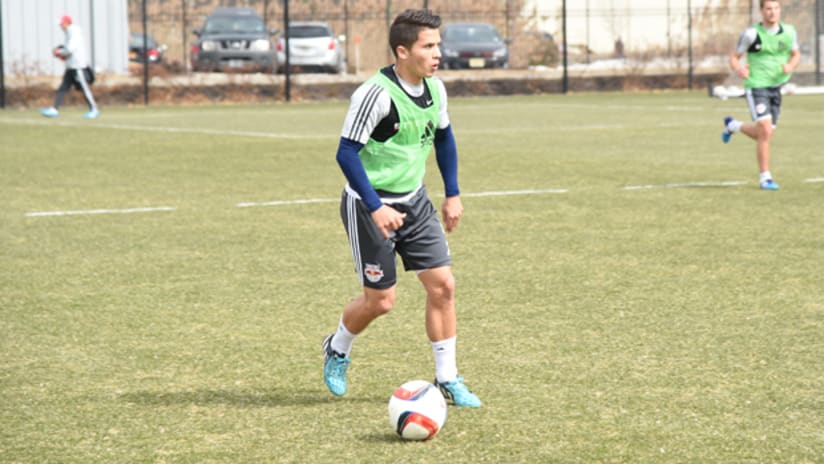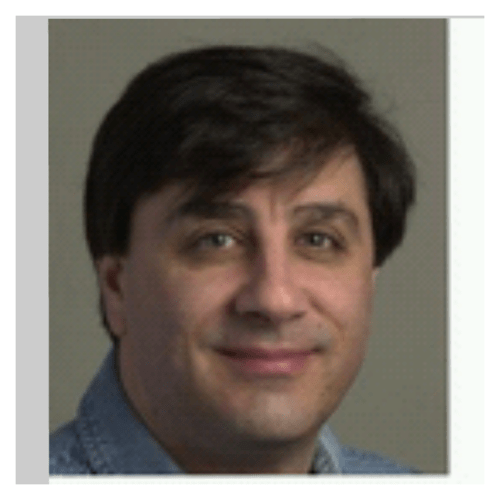Ah, versatility. Business owners love it because it gives them more experienced, productive employees. Coaches love it because it gives them more options with the lineup.
But the versatile player? Perhaps television detective Adrian Monk put it best the way he described how his obsessive-compulsive disorder affected his daily life but helped him solve crimes. “It’s a blessing and a curse,” he said.
After a few years of feeling the blessing, Red Bulls defender Connor Lade, the club’s most versatile player, is beginning to feel the curse, and it’s something he’ll have to fight through to earn a place in the starting lineup.
“Yes and no,” Red Bulls coach Jesse Marsch said about the blessing/curse issue. “It keeps him involved in all the different discussions and different parts of the field. He may not always come out ahead of the other guys, but I do think it keeps him involved in different discussions and helps put him on rosters other times. But for sure, for him to establish himself as a pro he has to establish himself in one position.”
For now, Lade has come to accept his fate. In his three-plus years with the club he has already seen time in every defensive and midfield role. While he likes the challenges versatility brings, Lade would prefer to find a regular place, earn a starting spot and move forward.
”Most coaches would like a player that can play a wide array of positions,” Lade said. “In a sense, it’s an asset for them. For myself, it can lead to different opportunities in different positions, so it’s always something I’ve embraced. I’ve played a lot of positions here and throughout college and before. It’s never really been one spot for me. The down side is you may not been seen primarily in one position so it’s definitely hard work to try and break in (to the lineup) in one spot and only that spot, but I never look at the negative side of it.
”(The frustration) can be tough at points, but you’re always in the mix so you can’t really be mad. If you’re only seen in one spot and you’re not at the top of the list, you might not even be in the 18 and be given some of the chances you might see if you play a number of positions. Versatility comes with its positives and negatives, but I try to be as positive as I can with it.”
As a rookie in 2012, Lade had a great opportunity under then-coach Hans Backe when injury, illness and international call-ups forced Backe to turn to young, inexperienced players, something he was not in favor of doing. To Backe’s surprise, many of the players did well, including Lade, who started 22 of 26 games and finished fifth in the voting for rookie of the year.
A year later, under Mike Petke, Lade had an injury-plagued season and saw just 166 minutes over five games. Last season, Lade was loaned out to the NASL’s New York Cosmos and played just a handful of minutes in six MLS games.
Now 25 and playing for his third coach, Lade hopes this is the year things settle down.
“I had my time with Hans, and Mike gave me a pretty fair shot, and now Jesse. All you can do is give it all you can in training and make the best impression you can,” Lade said. “Jesse is very good at letting guys know where they’re at, the communication is good to have, and what’s expected of them when they step on the field. It pushes everyone and lets them know they have a shot to play every week.”
Marsch feels the same way.
“He has flexibility in his game,” the coach said. “We had an initial conversation, that I’d like to find one position for him, but at the same time I knew that was one of his strengths in how we consider how we might use him. … We look at him at left back and right back. I also tend to think that his best spot is the center of the midfield because his awareness, his reactions and his competitiveness and his ability on the ball feeds to him being most successful in that spot, but we’ve also used him in training and the preseason in outside spots as well.
“I probably share similar feelings as the previous coaches in how they used him and I would like to help him establish himself in one spot, but I’d be open to the flexibility.”
With Red Bulls II beginning a full season in the USL PRO league, Marsch and Lade feel that may be the best opportunity to get playing time and for Lade to establish himself in one position.
“He’ll be with both teams,” Marsch said. “He’s a part of that first group, but in order for him to keep sharp he’s going to have to get games with USL PRO, and those games will be good for him. (RB II coach) John (Wolyniec) and I had a conversation (Wednesday) that he’s going to play in the USL PRO game this weekend, but it was the same (problem). Do we use him at left back, do we use him at right back, do we use him in center mid, so it clearly is a double-edged sword for him a little bit.”
Lade seems comfortable with that, at least for now.
“Anytime you get games it’s important, especially if you’re not getting a first-team crack,” he said. “You are always are looking for games. That’s the easiest opportunity to get in there and show them what I can do, keep my foot on the ball and get game fitness so when my number’s called you’re ready to go.
“I feel comfortable enough at any of those positions to step on the field and be productive and help the team as best I can. I’m most comfortable at right back, but got more and more comfortable at holding mid. I also played left back growing up. My comfort factor is different at every position. I’m focused on what I can control and that’s my full commitment here and helping the team any way I can, pushing guys in front of me, making sure they’re not comfortable and being hungry for some playing time. I’m not one to quit so I’m going to work my hardest to get on the field.”
Frank Giase has covered Major League Soccer since the league's inception in 1996. Follow him on twitter at @Frank Giase. He can also be reached at fgiase@gmail.com.
GIASE: Marsch lauds Connor Lade's versatility, but looks for establishment at one position


Starting XI Pass
Your pass to the ultimate experience at Sports Illustrated Stadium - with all the benefits of a Red Membership - including the remaining 11 Regular Season matches, Playoffs and more - starting at just $99 per month.

Miami Pack | Inter Miami CF + 3 Matches Of Your Choice
Score the highly-anticipated Eastern Conference match against Inter Miami CF, plus any three -- or more -- additional matches of your choice!




